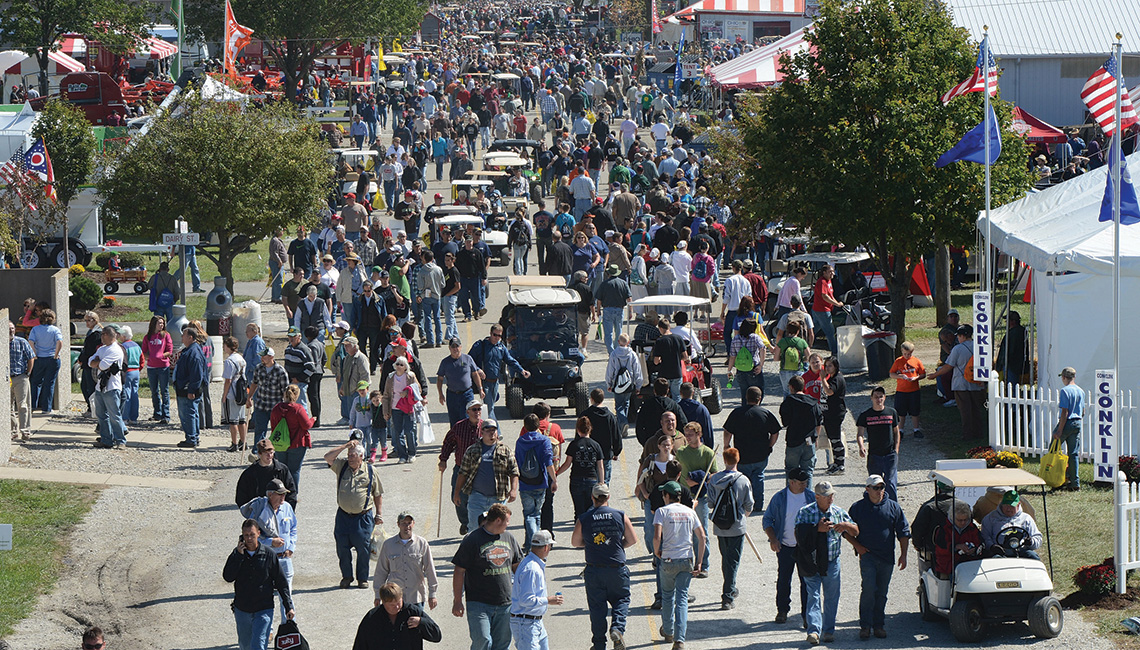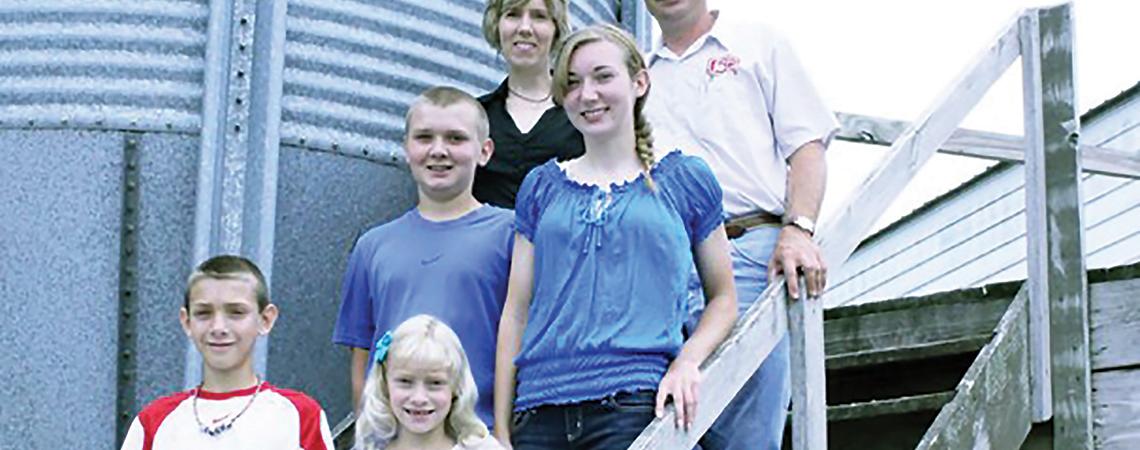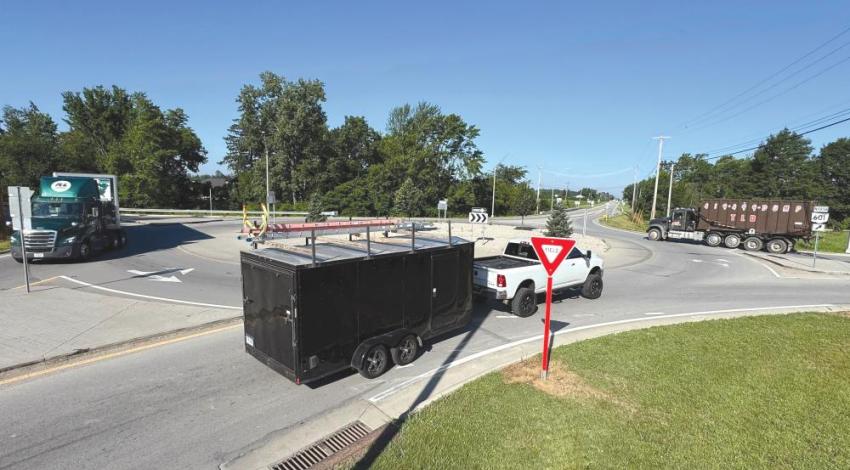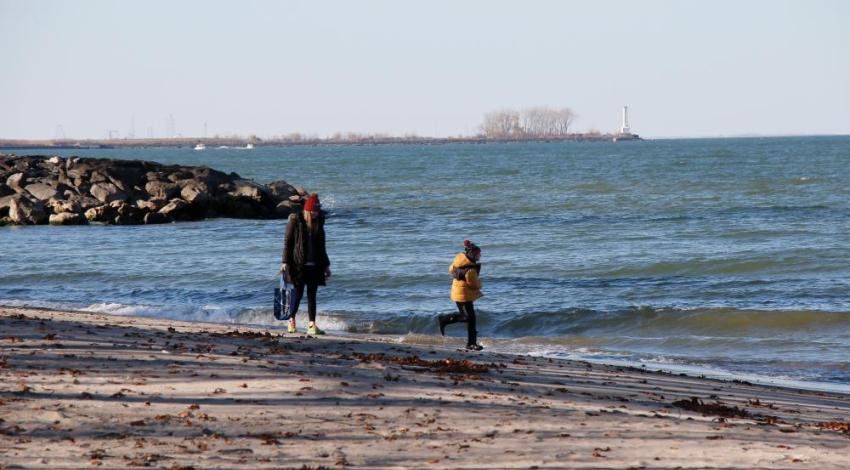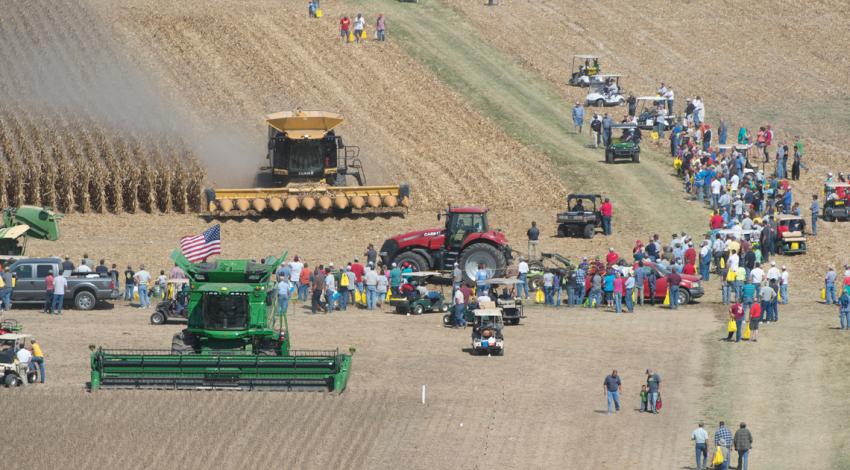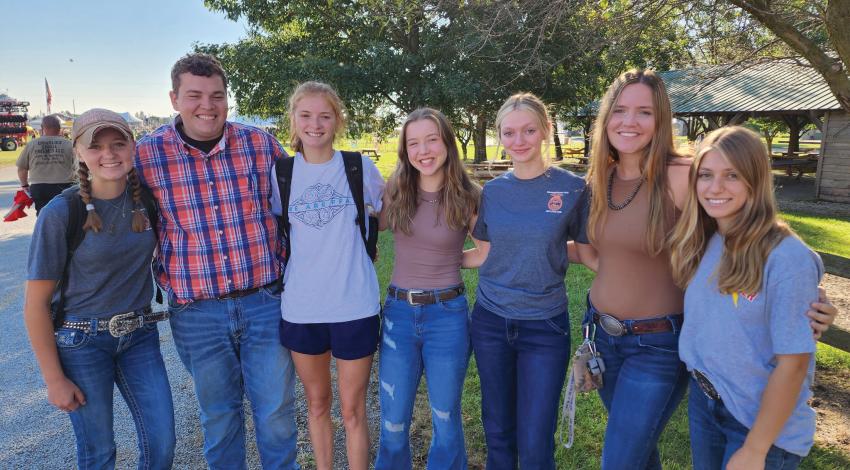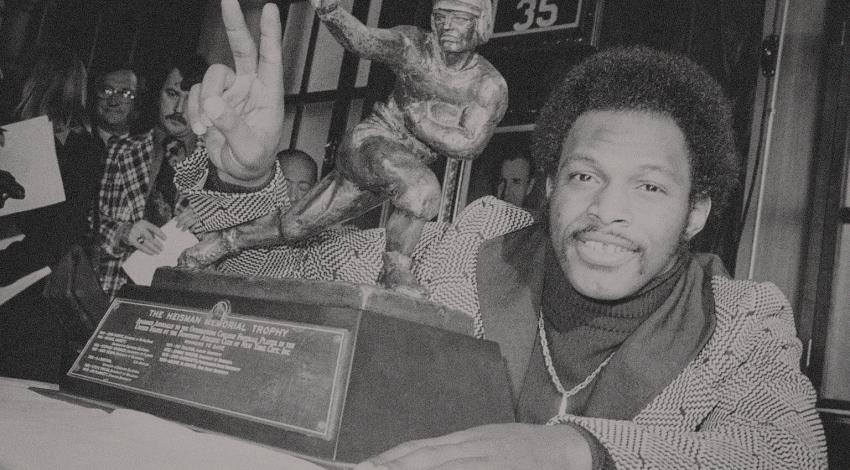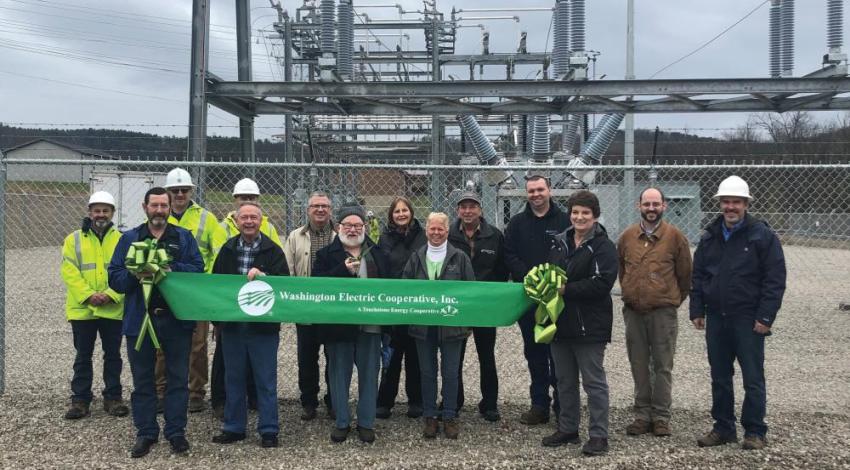On any given day, 360,000 chicks roam the high-tech henhouse at Meiring Poultry Farm in Fort Recovery. To protect them from disease and predators, the birds stay inside full time during their entire stay at Meiring, where owner Bill Knapke raises them to become egg-layers, wherever their next home may be.
Bill Knapke and his family own and operate Meiring Poultry Farm in Fort Recovery.
The four-story henhouse uses an elaborate lighting system that Knapke can control from his smartphone to simulate dawn and dusk. The system controls individual lights within the building, creating total blackness to bright-as-daylight and back again so the chicks become adjusted to the “natural” dawn and rising of the sun to a sunset that draws them into the roosting module where they nest for the night.
The barn has its own Wi-Fi, which Knapke can use to check feeders, lights, and water, all from his phone. “The technology is incredible,” he says. “It lets us have the chicks roam around, but the buildings are cleaner, well-ventilated, and work much more efficiently.”
Farmers like Knapke have always been drawn to technology — farming is a difficult life, after all, and anything that comes along that makes things easier or more efficient is generally met with appreciation, if not downright enthusiasm.
It’s one of the reasons that the Farm Science Review has been such a popular event throughout its 60-year history. It has always been a showcase of the latest technology available to the agriculture community.
This year, however, is a little different.
While it’s still about high-tech implements and techniques at the cutting edge of farming research and development, the first bit of technology presented to those who attend this year will be in the very way people attend. Because of concerns and restrictions related to the coronavirus pandemic, this year’s event, Sept. 22–24, will be entirely virtual. Details on how to join the free event are at the Farm Science Review website.
“We understood early on that the show would have to take a drastically different approach in order to meet health and safety requirements,” says Nick Zachrich, Farm Science Review manager.
The three-day event normally draws between 35,000 and 50,000 visitors per day to the Molly Caren Agricultural Center in London, where they peruse 4,000 product lines from 600 commercial exhibitors, view field demonstrations, and learn the latest in agricultural production. The event features educational programming as well, not only from Ohio State University and other land-grant institutions but also from other organizations that are committed to both education and the agricultural community.
Ohio’s 24 electric cooperatives have been a part of the Farm Science Review for nearly as long as the review has existed. For years, the co-ops erected a giant tent on the grounds for educational displays and demonstrations of how electricity brings convenience to the modern world. The popular cooking demonstrations, in fact, were first devised as a way to teach farm families about microwave ovens when that technology was cutting edge.
The electric cooperative tent got so popular that the co-ops decided to pool their money in 2008 to build what is now one of the largest permanent structures on the grounds. In typical years, the building hosts displays about renewable energy and energy efficiency, as well as electrical safety demonstrations by co-op employees.
“Electric co-ops first came into existence to serve the needs of farmers who needed electricity on their farms,” says Ted Riethman, marketing and energy use specialist at Pioneer Electric Cooperative in Piqua. “Agriculture is still the No. 1 industry that supports electric cooperatives, and we support agriculture in return, really in everything we do.
“Being a part of the Farm Science Review lets us fulfill several important parts of our cooperative mission,” says Reithman, who leads the statewide planning effort for the co-ops’ participation. “It’s right there in our principles that we value education and we have concern for our community. Being part of this event gives us the opportunity to engage with so many of our members and helps us live those principles.”
Because of the virtual set-up, the co-ops won’t have a way to participate this year, but Riethman, for one, knows it still will be a useful event for co-op members to log on and take part in. The event will include livestreamed and recorded presentations, such as the field demonstrations popular at the live show, and will be free to visitors.
